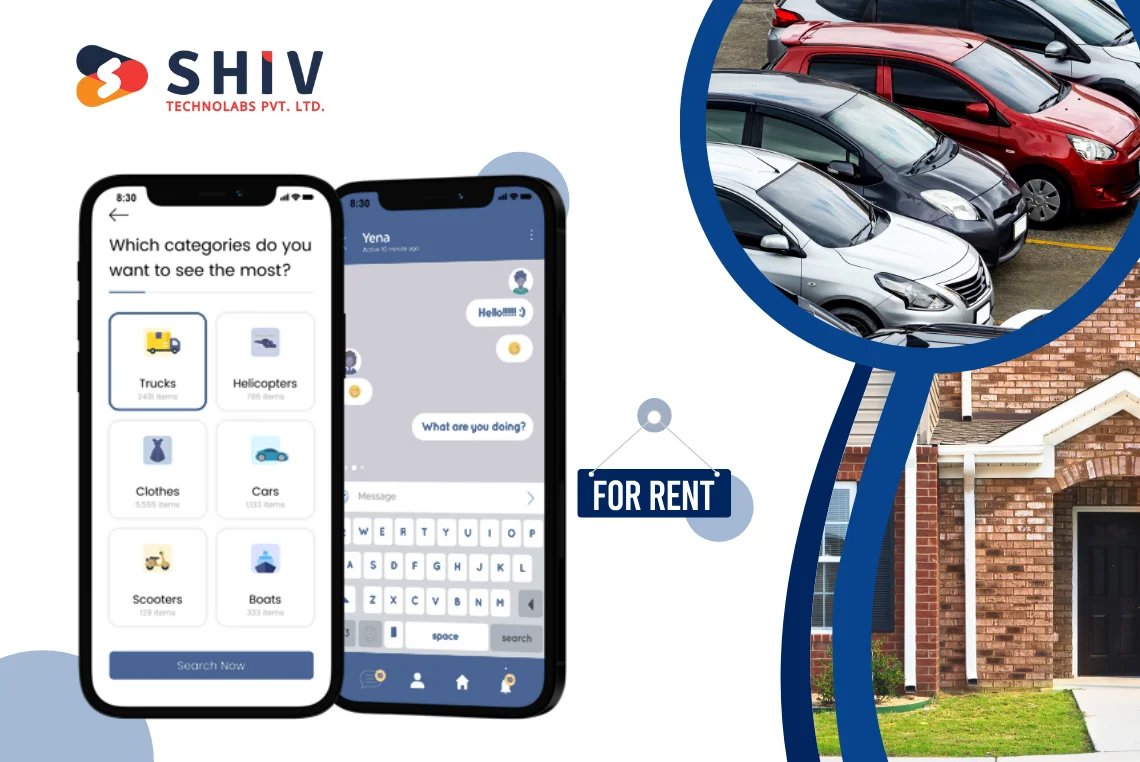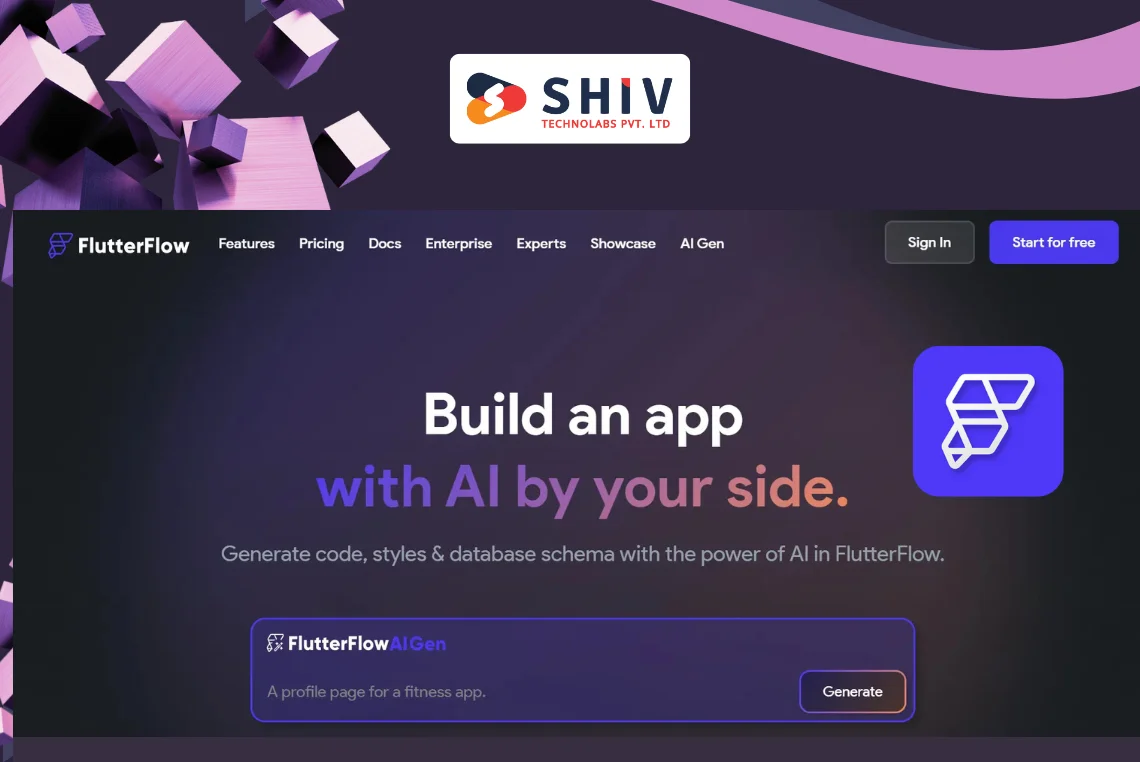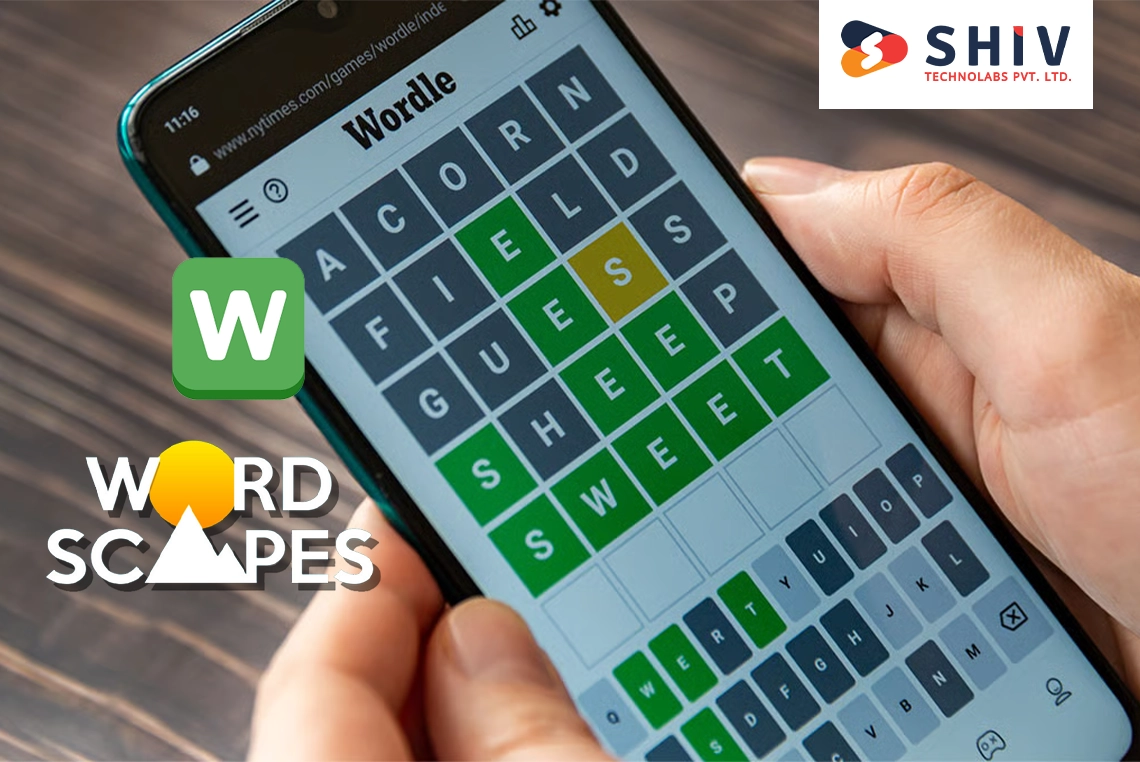Table of Contents
You don’t need to own 500 apartments, 200 cameras, or 50 cars to build a rental business anymore. You just need an app that brings people together—those who have something to rent and those who need it. That’s exactly how platforms like Airbnb, Turo, and Fat Llama took off.
Airbnb now has over 200 million active users, more than 8 million listings in over 220 countries, and pulled in around $11.1 billion in revenue during 2024. That’s a 12% bump from the previous year, and hosts earned billions through the platform.
The idea is simple: give users a way to list, book, and manage rentals directly from their phones. But behind that simple idea is a structured process—planning, development, and careful decisions about features, tech, and cost.
In this blog, we’ll break down how rental apps are actually built, what types of rental apps are out there, and how much you should expect to spend if you’re planning to build one.
How Rental Marketplace Apps Work?
Rental apps aren’t complicated at their core. They just connect two people—one who owns something and one who wants to rent it.
Let’s say someone wants to rent a car for the weekend. Another person nearby owns a car they don’t need for those days. The app helps them find each other, handles the payment, and keeps the process simple for both.
Here’s the basic flow most rental platforms follow:
- An owner lists their item. They upload photos, set a price, and choose availability.
- A renter browses and books. They pick dates, agree to terms, and pay through the app.
- The item gets picked up or delivered. That depends on what’s being rented.
- After use, the item is returned. Reviews are shared. Payment is released.
Apps like Airbnb and Turo use this same structure. Airbnb adds extras like cleaning fees and guest verification. Turo includes driver screening and insurance options.
The job of the app is to make the transaction feel easy and safe. It usually takes care of payments, messaging, ratings, and sometimes even customer support if something goes wrong.
That’s the basic setup behind most rental marketplace apps. Once you understand how it works, building one becomes a lot easier to plan.
Types of Rental Marketplace Apps
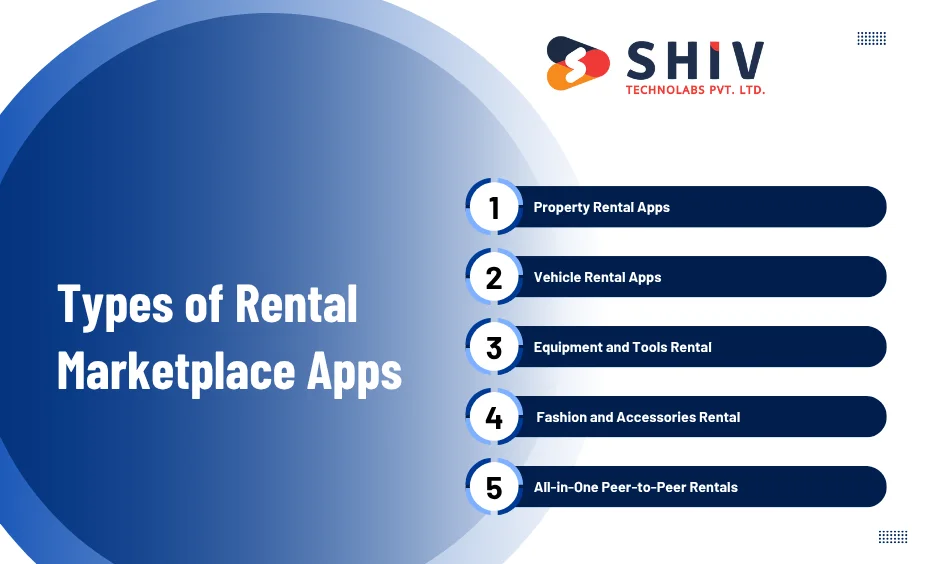
Not all rental apps are built the same. What you’re renting shapes everything—from how the app looks to what features it needs. Some apps focus on one category. Others mix a few.
Here are the most common types:
1. Property Rental Apps
These let people rent out homes, apartments, or even rooms for short or long stays. Airbnb is the biggest name here, but there are local apps too, especially for vacation homes and serviced apartments.
Key features:
- Calendar availability
- Location-based search
- Ratings and guest verification
2. Vehicle Rental Apps
Vehicle rental apps include cars, bikes, scooters, RVs, EVs, and even boats. Turo, Getaround, and Outdoorsy all run on this model.
Key features:
- Driver verification
- Insurance integration
- Trip-based pricing
3. Equipment and Tools Rental
Platforms like Fat Llama let people rent cameras, drones, power tools, and more. Some target freelancers and creators. Others focus on homeowners and hobbyists.
Key features:
- Damage protection
- Pickup/drop-off coordination
- Item condition tracking
4. Fashion and Accessories Rental
Apps like Rent the Runway let users borrow clothes, shoes, handbags, and jewelry for a few days. This model works well for events and fast-changing fashion trends.
Key features:
- Style browsing
- Cleaning and return tracking
- Subscription options
5. All-in-One Peer-to-Peer Rentals
Some apps let users list anything they want—furniture, electronics, event gear, and more. These apps need flexible listings and broad category support.
Key features:
- Custom categories
- Local filters
- Flexible time slots
The type you choose affects everything—from how users sign up to how pricing and security are handled. Pick one that matches the kind of items or services people need in your area or niche.
How to Build a Rental Marketplace App (Step-by-Step)
If you want to launch a rental platform, then you must know what goes into building one.
It’s not just about design or writing code. It’s a mix of planning, testing, and getting the basics right so your app actually works when people use it.
Here’s how the process usually goes:
Step 1: Decide What You’re Renting
Start with one clear focus. Are you renting homes, cars, tools, or something else? This one choice affects everything else—how listings are structured, how payments work, and what kind of users you attract.
Step 2: List Must-Have Features
Rental apps don’t need to be fancy, but they do need to be reliable. At a minimum, your app should support:
- User registration (for owners and renters)
- Item listings with photos, price, and availability
- A way to search, filter, and book
- Payment gateway (Stripe, Razorpay, etc.)
- Reviews and ratings
- Messaging or contact system
- Admin dashboard to manage listings, disputes, and payouts
Later, you can add features like maps, ID verification, insurance add-ons, or subscriptions.
Step 3: Choose Your Tech Stack
The tech behind your app matters. You can build a native app (iOS and Android separately) or go with a cross-platform framework like React Native or Flutter.
For the backend, developers often use Node.js, Django, or Laravel—something scalable and reliable.
You’ll also need:
- A database (like PostgreSQL or MongoDB)
- A cloud provider (AWS, DigitalOcean, etc.)
- A secure payment API
- SMS and email service for notifications
Step 4: Build an MVP (Minimum Viable Product)
Don’t wait to build a “perfect” app. Start small with the core features. This version helps you test if users actually want what you’re offering.
Real-world example: Airbnb’s first version didn’t have online payments. It was just a way to contact hosts.
Step 5: Test, Launch, Repeat
Once your MVP is ready, test it with real users. Get feedback fast. Fix bugs. Add only the features that improve bookings or trust.
If users love the experience, you’re already on your way. If not, improve and try again. That’s normal.
Once your app is stable, you can start thinking about scaling, marketing, and automation. But without a working app that people trust, none of that matters.
How Much Does It Cost to Build a Rental Marketplace App?
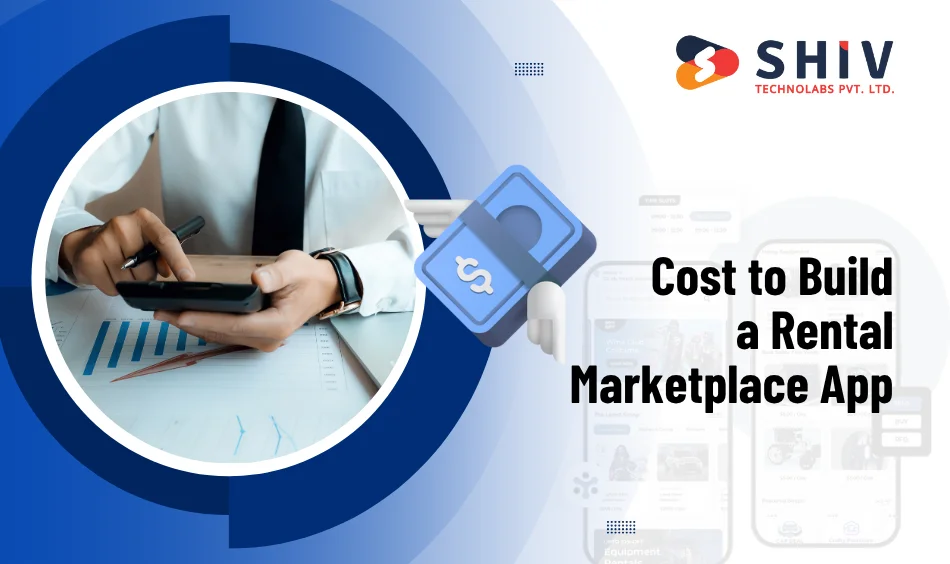
The cost depends on what you’re building, how fast you want it, and where your development team is based.
A small MVP built by a local agency will cost much more than one built by an offshore team with the same features.
Let’s look at different cost scenarios to keep things practical.
1. Basic MVP for One Rental Category (Outsourced to India or Eastern Europe)
If you’re building a simple app that only supports one type of rental—like bikes or tools—this table shows what you might expect to pay.
| Feature / Task | Estimated Hours | Hourly Rate ($25–$40) | Total Cost (USD) |
|---|---|---|---|
| UI/UX Design | 60–80 | $25–$40 | $1,500–$3,200 |
| Frontend Development | 150–200 | $25–$40 | $3,750–$8,000 |
| Backend Development | 180–220 | $25–$40 | $4,500–$8,800 |
| Admin Panel | 50–70 | $25–$40 | $1,250–$2,800 |
| Payment Gateway Integration | 30–40 | $25–$40 | $750–$1,600 |
| QA & Testing | 40–60 | $20–$30 | $800–$1,800 |
| Total (Basic MVP) | 510–670 | — | $12,000–$26,000 |
This type of build takes around 3 to 4 months. It works well for early testing and pilot launches.
2. Full-Featured App for Property or Vehicle Rentals (With ID Checks, Reviews, Maps)
When you need more advanced features like driver verification, map integration, insurance options, and multiple user roles, costs go up.
| Feature Set | Estimated Cost (USD) |
|---|---|
| Custom UI/UX + Mobile Responsiveness | $3,000–$6,000 |
| Mobile App (iOS & Android) | $12,000–$20,000 |
| Admin Dashboard | $2,000–$4,000 |
| Backend with APIs | $6,000–$10,000 |
| Features: Reviews, Maps, ID Check | $3,500–$6,000 |
| Payment + Payout Setup | $1,500–$3,000 |
| Testing + Security | $1,500–$2,500 |
| Total (Full App) | $30,000–$50,000 |
This setup fits mid-size rental platforms like vacation homes or peer car-sharing. Timelines range from 5 to 7 months.
3. Enterprise-Scale Platform (With Web, Mobile, and Custom Integrations)
For startups that want to build a rental platform at scale—supporting web and mobile, multiple item categories, subscription billing, and integrations with tools like HubSpot or Zoho—the budget needs to be higher.
| Component | Cost Range (USD) |
|---|---|
| Product Strategy & Planning | $5,000–$8,000 |
| Full Web App (React or Vue) | $10,000–$15,000 |
| Mobile Apps (Cross-Platform) | $15,000–$25,000 |
| Advanced Features (Insurance, Live Chat, etc.) | $8,000–$12,000 |
| API Integrations (CRM, Analytics) | $3,000–$6,000 |
| DevOps, Hosting, Maintenance | $2,000–$4,000/year |
| Total (Enterprise Version) | $45,000–$70,000+ |
This build is suitable for high-growth startups with funding. Expect 6 to 9 months for development and rollout.
Thinking of Building a Rental App?
If you’re planning to launch your rental marketplace app—whether it’s for homes, cars, or something niche—Shiv Technolabs can help. We’ve built platforms that handle real transactions, real users, and real business needs.
Our dedicated team works closely with startups and growing businesses to build marketplace apps that are simple, stable, and ready for scale. From MVPs to full-scale builds, we make sure every part of your app works, so you can launch with confidence.
We’re ready to help you plan, build, and launch your rental platform—on your terms.
Final Thoughts
Rental marketplace apps aren’t just a trend. They’re a smart business model that’s already proven across categories—travel, mobility, fashion, tools, and more.
The good news? You don’t need to be a tech founder or own tons of inventory to start one. You just need a clear idea, a realistic budget, and the right team to bring it to life.
The next successful rental app could be yours. Contact us today!

